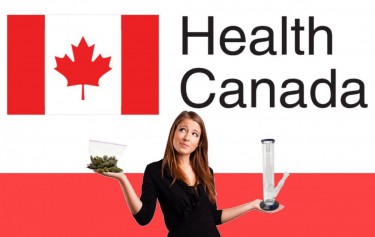
Despite Canada's legalization of marijuana for adult use more than five years ago, according to a recent analysis from Deloitte Canada, sales of cannabis remain mostly concentrated in the illegal market, accounting for anything between 25% and 50% of the entire market.
The paper explores the distinctions between the legal and illegal cannabis marketplaces and poses relevant issues about product offers, pricing, and operational tactics. 624 legitimate adult-use marijuana outlets and 57 illegal ones were the subject of an analysis by Deloitte and its data partner Neobi.
Christopher McGrath, senior manager at Deloitte Canada and the report's author highlighted two key findings: the convergence of prices and the audacity of illicit online platforms. Illicit websites were found to offer nearly double the product variety compared to legal retailers.
On average, regulated recreational stores stocked 538 different products per store, whereas illicit operators boasted an average of 918 SKUs. McGrath pointed out that the illicit market enjoys a significant competitive edge due to fewer regulations, pricing flexibility, simpler and cheaper production processes, and the use of pesticides.
He emphasized the upcoming Cannabis Act review, due by the end of March, as an opportunity to address industry challenges. The report also seeks insights from experts across Canada to understand why the country's cannabis market is not flourishing as expected.
Delayed Tax Payments Pose Challenges for Competing LPs
Beena Goldenberg, CEO of Organigram Holdings in Toronto, highlights the struggles facing many licensed producers (LPs) in the current industry landscape.
Amidst challenges to achieve profitability, LPs are often forced to prioritize payments to suppliers, bills, and employees over excise duties. Unfortunately, for numerous cannabis companies, excise duties frequently fall to the bottom of the list of payables.
This situation is exacerbated by the Canada Revenue Agency's (CRA) lack of enforcement in excise collection in recent years, creating an uneven playing field within the industry. LPs in arrears are utilizing excise duties collected from provincial wholesalers as a source of funding, effectively using the Canadian government as a financing mechanism.
This unfair advantage gives delinquent LPs, unlike those promptly paying taxes like Organigram, the ability to leverage excise payables for cash flow. Goldenberg emphasizes the importance of consistent penalties, payment plans, and enforcement in tax policy to facilitate industry consolidation, ultimately bolstering a thriving legal market.
Success in the Legal Cannabis Market: Lessons Learned
Julia Cameron, Vice President of Communications at Pure Sunfarms in Vancouver, British Columbia, sheds light on the positive aspects of the cannabis industry amidst its complexities and challenges.
While acknowledging the hurdles, Cameron emphasizes the importance of recognizing the bright spots in profitability, performance, and productivity. She points out that those achieving success have done so through strategic and measured approaches, rather than haphazard spending.
Successful players in the market have adopted prudent capital utilization, maintained careful cash flow management, made strategic investments, and employed thoughtful product segmentation strategies. They have also capitalized on the expertise of seasoned operators who understand navigating regulations, economic shifts, and tight profit margins.
Additionally, successful businesses have remained grounded in reality, avoiding overly optimistic market assumptions and setting achievable goals. They have also embraced collaboration, fostering open communication with government entities, regulators, and even competitors.
Cameron concludes by urging industry participants to consider these principles as they strive to build thriving cannabis businesses.
The Legal Cannabis Market Falls Short of Expectations
Tamara Lovi, Chief Business Officer at Rose LifeScience and Board Treasurer of the Cannabis Council of Canada (C3) in Montreal, highlights a significant gap between expectations and reality in the regulated cannabis market.
Approximately five years ago, prior to legalization, there was an assumption that the legal market size would reach approximately CA$ 10 billion. However, the current reality falls short of this projection, with the market only surpassing halfway.
While the legal market continues to expand annually, businesses that heavily invested based on the expectation of reaching CA$10 billion are facing sustainability challenges. Lovi points out that excise tax, which was anticipated to represent around 10% of gross sales, now accounts for approximately 30%, significantly impacting licensed producers' profit margins.
Limited resources are available for licensed manufacturers to operate, adhere to laws, compete with illegal market prices, or reinvest in their enterprises as a result of this increased tax burden. Consequently, in order to stay lucrative, licensed manufacturers must innovate and simplify their operations; many are fighting just to survive.
In order to reduce the booming presence of the illegal market and to allow the legal sector to reach its full potential, Lovi highlights the urgent necessity for excise tax reform.
The Legal Cannabis Market Falls Short of Expectations
Tamara Lovi, Chief Business Officer at Rose LifeScience and Board Treasurer of the Cannabis Council of Canada (C3) in Montreal, highlights a significant gap between expectations and reality in the regulated cannabis market.
Approximately five years ago, prior to legalization, there was an assumption that the legal market size would reach approximately CA$ 10 billion. However, the current reality falls short of this projection at roughly CA$5 billion a year, with the market only surpassing halfway
While the legal market continues to expand annually, businesses that heavily invested based on the expectation of reaching CA$10 billion are facing sustainability challenges. Lovi points out that excise tax, which was anticipated to represent around 10% of gross sales, now accounts for approximately 30%, significantly impacting licensed producers' profit margins.
Limited resources are available for licensed manufacturers to operate, adhere to laws, compete with illegal market prices, or reinvest in their enterprises as a result of this increased tax burden. Consequently, to stay lucrative, licensed manufacturers must innovate and simplify their operations; many are fighting just to survive.
In order to reduce the booming presence of the illegal market and to allow the legal sector to reach its full potential, Lovi highlights the urgent necessity for excise tax reform.
Bottom Line
The analysis and insights provided by industry experts paint a complex picture of Canada's cannabis market. Despite legalization, significant challenges persist, with the illegal market continuing to thrive alongside legal retailers. Key issues such as delayed tax payments, regulatory burdens, and pricing differentials pose barriers to the growth of legal cannabis businesses. However, clear success strategies are emerging, including prudent financial management, strategic investments, and collaboration with stakeholders. Moving forward, addressing these challenges and fostering a supportive regulatory environment will be essential to realizing the full potential of Canada's legal cannabis market.
CANADA TRIES TO SLOW THE ILLICIT MARKET, READ ON...
HEALTH CANADA TRIES TO CURTAIN THE ILLEGAL MARIJUANA MARKET!







